Vermiculite vs perlite and knowing the difference between them can have you scratching your head! Have you ever wondered how to use vermiculite and perlite? What are they and how to incorporate them in the garden? Using natural products like compost, cow manure, perlite, and vermiculite will get your garden off to a great start!
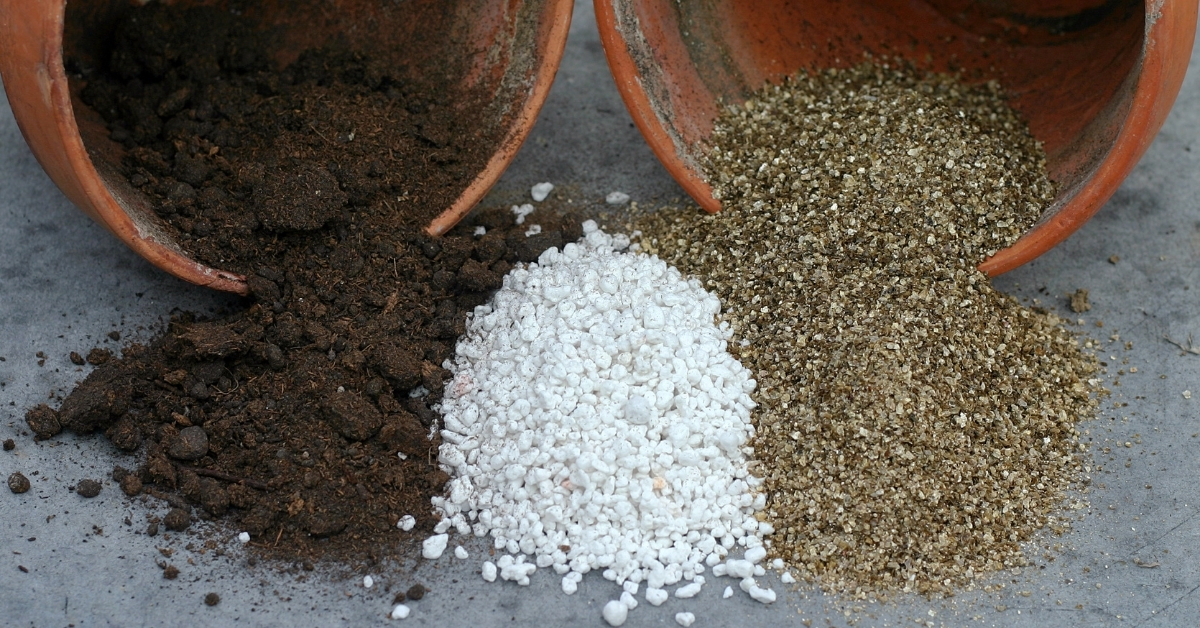
Vermiculite vs. perlite is different as to how they aid in gardening. Just like baking soda and baking powder do in baking. I am sure not everyone knows the possibility of using these materials for their purposes.
Despite the fact that perlite and vermiculite for plants are somewhat similar, there is a difference. And now we are going to find out how they are different.
Table of Contents or Collapse to Hide
What is Perlite?
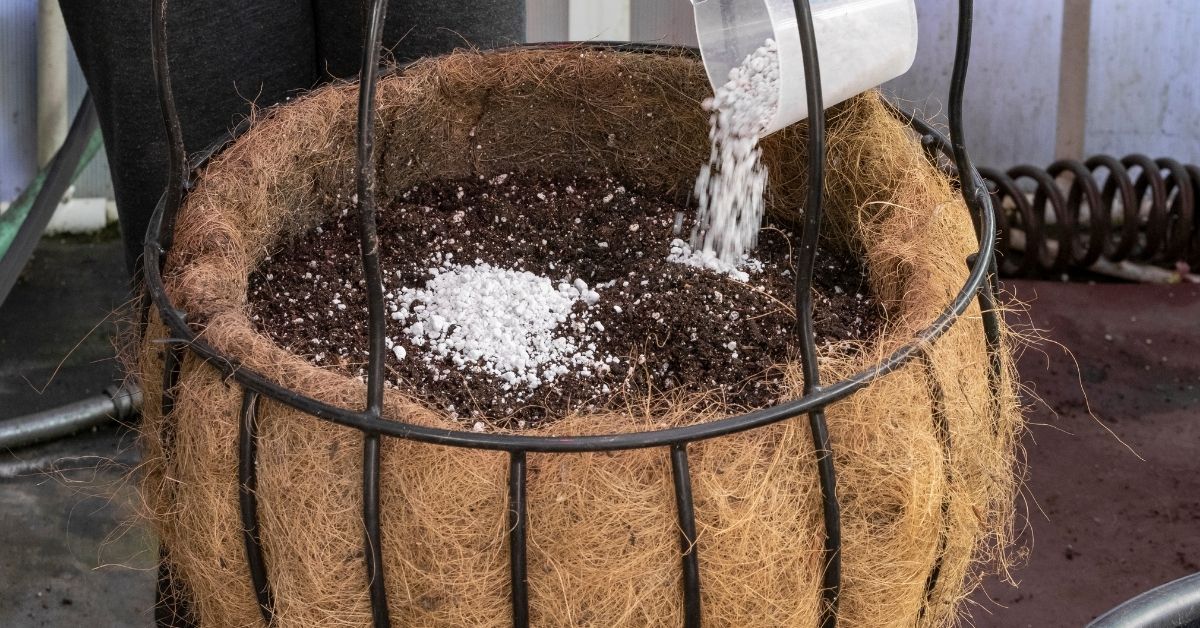
Before proceeding with the comparison of perlite and vermiculite, let’s consider each material separately.
- Perlite is a rock of volcanic origin
- At the moment of contact with the lava on the ground, or immediately after cooling, it is formed called mineral Obsidian
- Which later hydrates the groundwater
- The hydroxide resulting from obsidian is perlite
- It helps prevent soil compaction
- Improves drainage
Surprisingly, the widest distribution of perlite is found in the construction industry. It’s used for acoustic and thermal insulation, as well as reducing the risk of fire.
Often, before the direct use of the perlite is a heat treatment in special ovens, where under the influence of high temperatures it swells (like popcorn). In agriculture, it is most often used for mulching the soil, but in indoor floriculture, it is an excellent alternative to the use of sand.
Using Perlite in Construction
When building our “primitive” room using concrete blocks, we filled the cavities with perlite. The perlite acts as an insulator in the concrete blocks. We were able to buy the perlite in bulk from a local nursery to save on cost.
Even though perlite will absorb water but when it dries, it will have all its insulating powers. This common construction insulator is non-combustible and has low thermal conductivity.
Perlite in Place of Sand
What does pearlite look like for flowers? In fact, it is easy to describe, because expanded perlite, like the vermiculite described later, is really very similar to ordinary sand. The chemical composition of perlite is almost identical to sand because it is silica-based.
It’s no secret that without the participation of sand, the preparation of many soil mixtures cannot do because its presence in the soil ensures good air permeability. This means that when you grow plants with a weak root system, including indoor flowers, you will have far fewer problems.
Is Sand Better than Perlite?
However, despite all the positive aspects, construction sand will not be very useful for plants. Therefore, experts advise applying only coarse grain material to floriculture, although it is quite difficult for residents of urban metropolises to find it.
A natural alternative to this sand is perlite because it is a chemically inert material that does not absorb moisture. Its main function is to loosen the soil, but no more.
With the use of this material, the problem of crust formation in the upper part of the soil disappears, which often appears as a consequence of the agglomeration of the soil (it is enough to pour on the surface of the perlite).
Sand Versus Perlite
Of the disadvantages of this sand substitute, there is a small positive charge, because of which the material is not able to bind and accumulate soil chemical elements, although this is most often not necessary.
Do you know? The use of agro-perlite completely eliminates the possibility of weeds. This characteristic is due to the high temperature (1100-1150 ° C) that accompanies its production in the ovens. That is, with such a serious temperature effect, the composition of the finished material simply cannot contain weed seeds or pest larvae.
Perlite for Plants that Prefer Acidity
Another characteristic of perlite is its slightly alkaline reaction, which must be taken into account when growing plants that require high substrate acidity (for example, garden dwellers and azaleas are part of the inhabitants). In other respects, the volume of perlite used should be the same as the amount of sand, that is, plants with weak roots that require softer soil will need more perlite.
Perlite for Root Cuttings
I love using perlite for rooting cuttings. However, in most cases, flower growers use a mixture of perlite with peat or sphagnum moss. It’s best to have the cuttings cut from strong healthy plants. The older the better.
Before taking a cutting, ensure the plant is well watered. It’s best to cut the cutting first thing in the morning or late in the evening to prevent stress on the plant.
Steps to Use Perlite for Root Cuttings
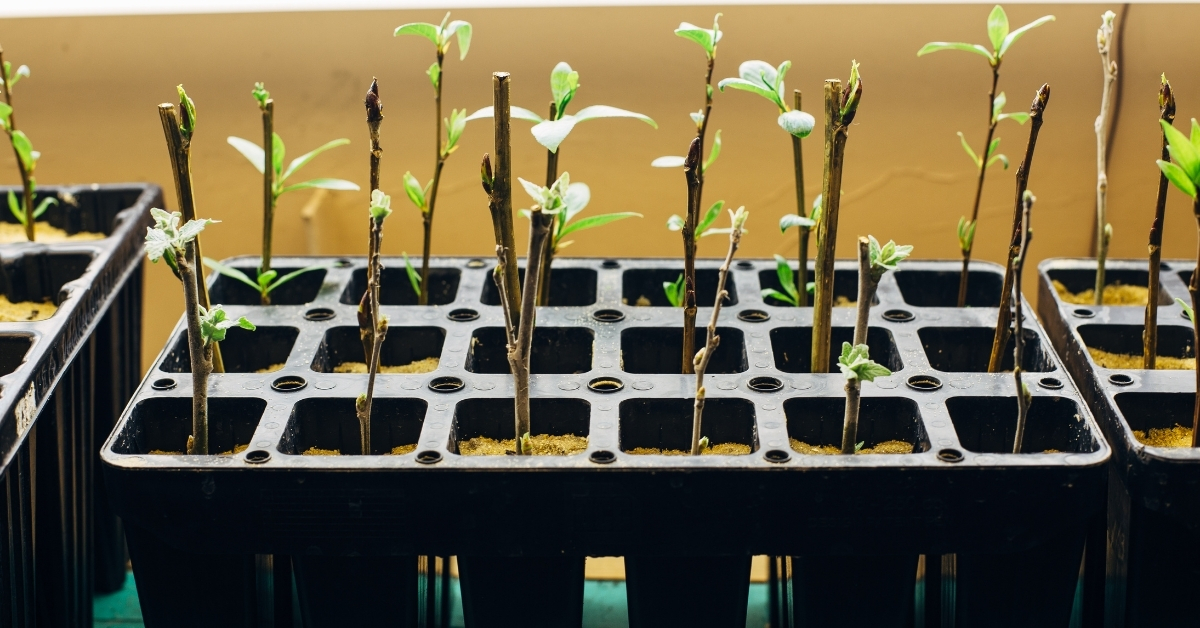
- Soak enough perlite in warm water to fill the container
- Fill a container with perlite
- Use a chop-stick or other poking instrument and pre-make the holes for the roots in the perlite
- Take cuttings at least 3-4 inches in length
- Insert your root cutting into the hole made with the chopstick
- Ensure to push the perlite tight to the cutting (no air pockets)
- Keep the perlite moist and never put the cutting in direct sunlight
HINT: When rooting lavender and rosemary, I make a 50/50 mixture of perlite and vermiculite as my mixing medium. I find this works just as well as when I root them in water.
Perlite for Seed Germination
Perlite is often used for seed germination because when mixed, it contributes to a more even distribution. It is possible to add additional seeds to this material and scatter the seeds. This works well if using extra small seeds.
When watering cuttings, perlite helps to prevent rot, and when growing flowers and vegetables in perlite, fungal diseases (eg, blackleg) are much less common.
How to Use Perlite for Storing Bulbs
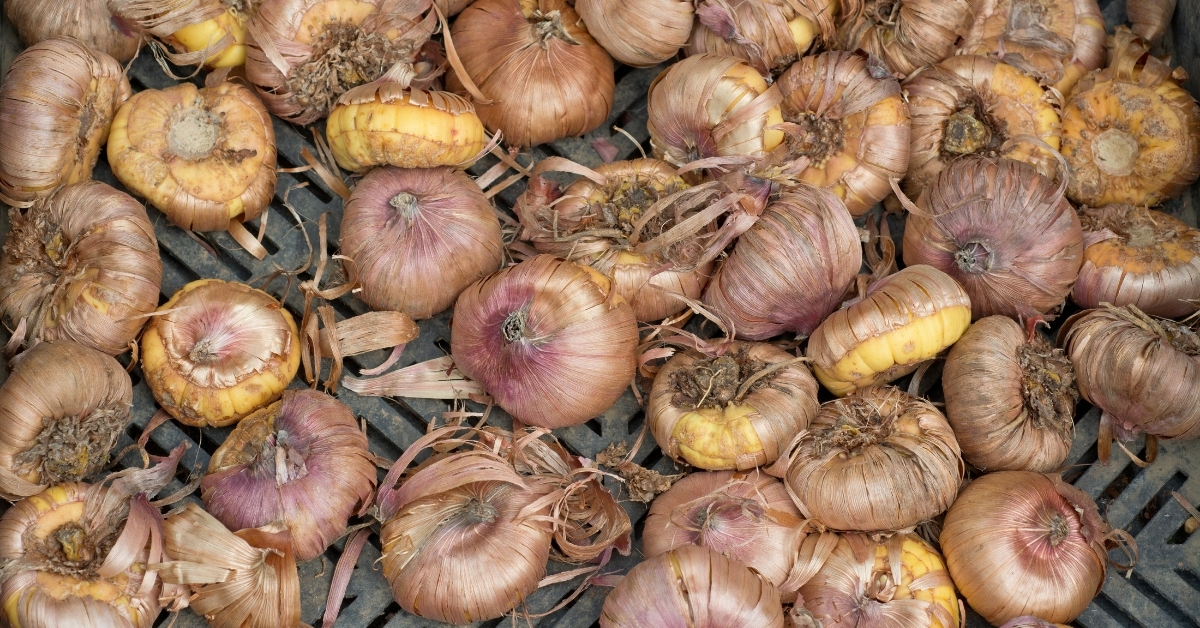
- Clean off all the dead debris after the bulb has finished flowering
- Find a container that will cover the bulbs by an inch
- Place a thin layer of perlite in the bottom of the container
- Place dry, clean bulbs in the container
- Please do NOT pack or push down on the perlite when storing the bulbs
- Label and cover and keep out of light and moisture
- An added step is to ensure mice and pests won’t have access to the bulbs
What is Vermiculite?
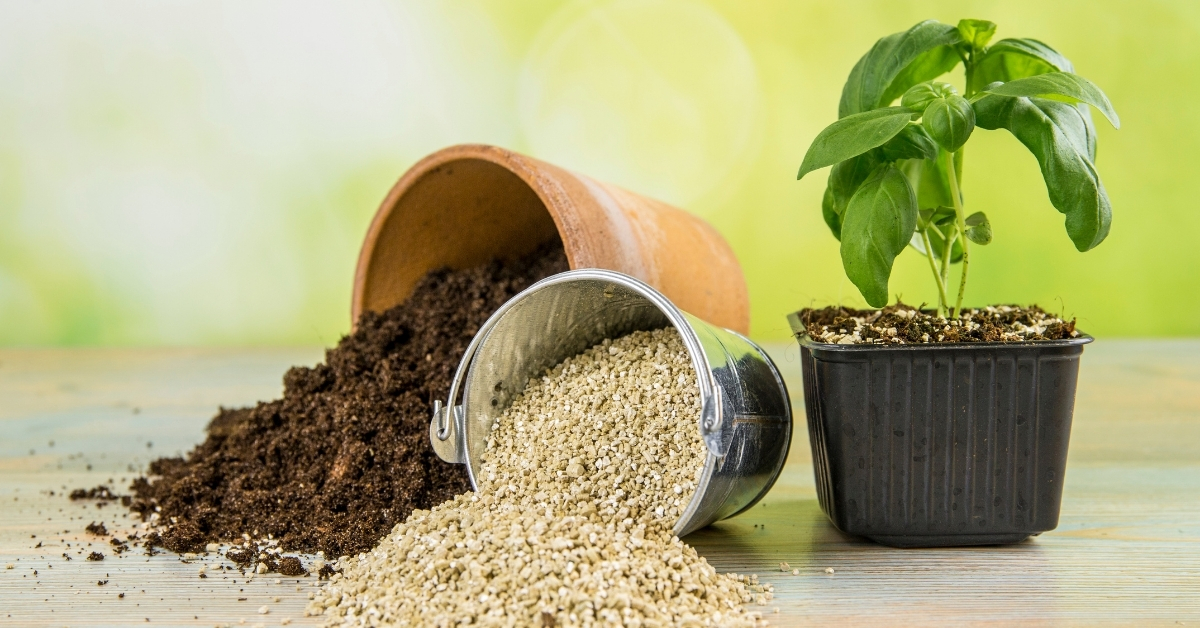
The ore is processed in mills, where pure natural mica is collected, sorted, and sent for use in the electrical industry. Then the remaining material is further sent to hydrothermal treatment in a conveyor oven (heated to 1400 degrees Fahrenheit).
Here are just a few fun facts about vermiculite:
- Vermiculite is a mineral belonging to the hydromica group
- It is an environmentally friendly material (practically sterile) that does not contain heavy or toxic substances
- Improves heavy soils
- Prevents compaction
- Improves drainage and aeration when mixed with a potting mix
- Not subject to degradation or decay
- Rodents and insects resistant
Vermiculite and Asbestos
You may have heard asbestos and vermiculite in the same sentence? No worries, your garden variety vermiculite does not have asbestos in it as it did from Canada before the 1990s. This was in reference to vermiculite insulation which was may have been contaminated with asbestos.
Agro-Vermiculite
Vermiculite is obtained by cooking, which is called agro-vermiculite. It contains many microelements useful for plants, including magnesium, calcium, aluminum, potassium, iron, and silicon. It should be noted that the distinction between vermiculite and perlite is precisely in the presence of trace elements in it.
Nevertheless, most of these particles are in a hard-to-reach form, so vermiculite cannot be considered the main supplier of all the nutrients needed for plants.
The high ion exchange capacity of vermiculite allows it to retain positively charged ions of magnesium, potassium, and other fertilizer elements introduced into the soil, and gradually give them to plants. The described material is a different moisture capacity and sufficiently large because when wet, it retains a weight of five times its own.
Important! Even with this feature, the use of vermiculite does not make the soil heavier and allows for easy aeration while providing a good supply of moisture.
A Common Feature of Vermiculite
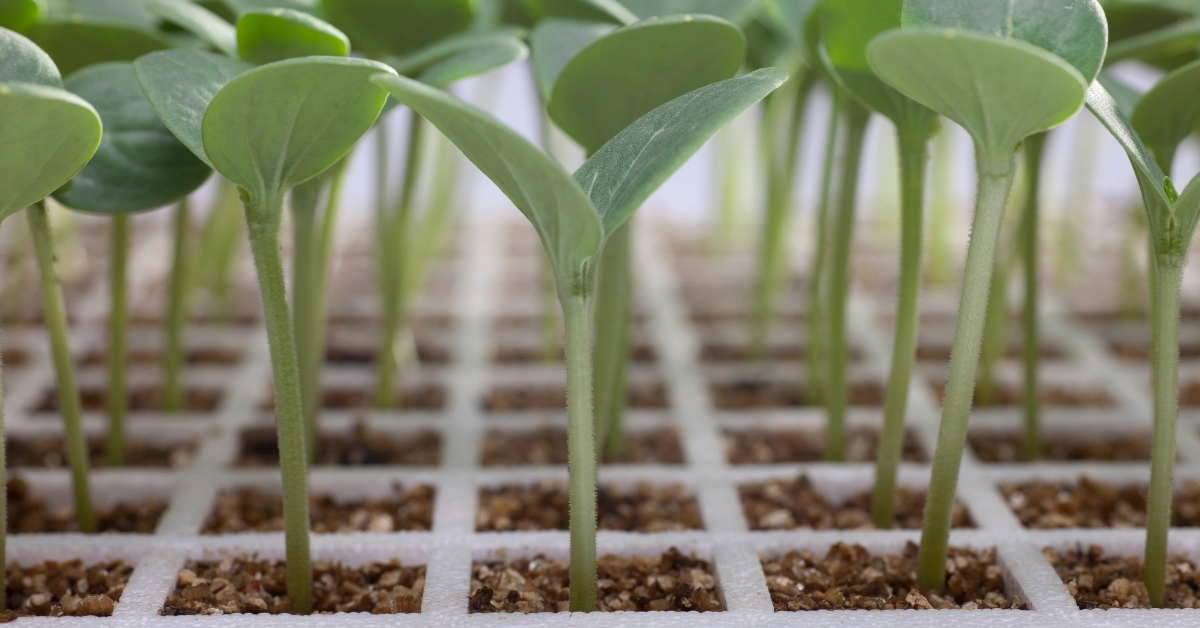
Vermiculite perfectly protects the root system of plants against temperature fluctuations, which is very important when growing seedlings. Being sterile, it does not contain microorganisms and fungi; it is also able to prevent rot and fungal diseases. Cuttings placed in vermiculite will root well and release the new plant easily.
This feature has made the material an ideal component of soil mixtures in varying proportions (up to 50% of the land substrate), and the friability, porosity, and moisture of the soil always return to normal. Vermiculite neutral acidity (pH) significantly reduces the acidity of the soil substrate and slows its salinity.
Storing Plant Bulbs in Vermiculite and Perlite
I store bulbs, once flowered in the spring and winter in vermiculite (as well as perlite) for next year. The low thermal conductivity of the material allows maintaining the balance of heat around the bulbs while maintaining the normal gas exchange. The bulbs placed in the material will not rot, and they will not be affected by a fungal infection.
The Best Medium for Root Cuttings?
If you need to root the cuttings, it is best to give preference to vermiculite. It offers less shrinkage during crushing (fewer cracks) when filled. It does not form voids and has small abrasive properties (it has no harmful mechanical effect on the roots).
In comparison with perlite, vermiculite is characterized by lower hygroscopicity and lower ionic capacity. They provide a capillary distribution of moisture. It is much easier to abandon the liquid and dry faster between watering.
Perlite and vermiculite both have positive characteristics. Making it a good alternative to the indoor flower substrate. But to determine the difference between them; you can make the right choice in every situation.
In a nutshell, perlite is best for plants that need to hold their water in more than drainage. Vermiculite is best for plants that need extra drainage and less wet roots.
Safety When Using Vermiculite and Perlite
Important! Vermiculite and perlite generate a lot of dust. Take caution when using either, especially in a windy area. I ensure to always use gloves when handling either one. Keep your face and little fur babies out of the area when using either one.
Is Peat Moss Sustainable?
I will briefly touch on this subject without getting in a deep dive into why we try and never use peat moss due to the adverse effects on the peat bogs’ ecosystems. Also, the harvesting of peat moss is another environmental nightmare. Read the full story From Ken Druse: the Real Dirt on Peat Moss about the real dirt on Peat Moss!
Here Are Just a Few Issues with Harvesting Peat Moss
- Drainage that runs off during the harvest causes changes in the surrounding surface water
- The dust that emits also has a vast impact on the environment
- It takes hundreds of years for that bag of peat moss to develop again once harvested
- Digging up the bogs to harvest the peat moss destroys everything living in the swamp
- Cold temperatures and low levels of oxygen are depleted during the harvest making it difficult for the good bacteria and fungi to decompose the dead plants which make the peat form
- When bogs are harvested, they can no longer prevent flooding and catch the runoffs
- Bogs absorb and collect masses amount of water but cannot once they are harvested
Alternative to Peat Moss
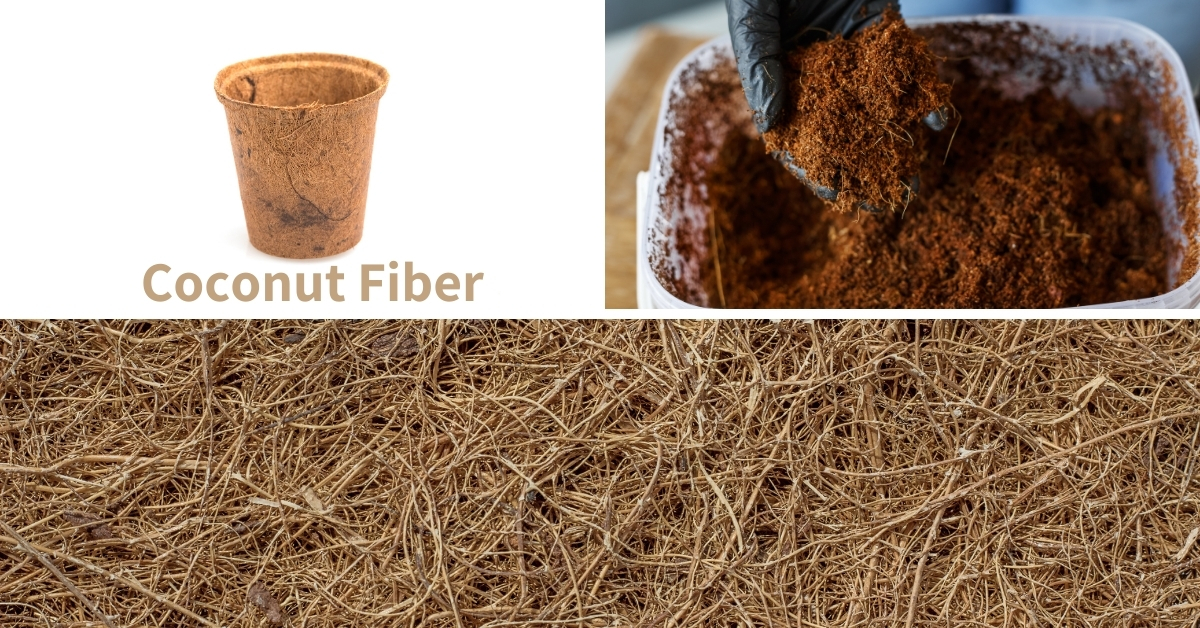
There are substitutions for peat moss-like compost and even coir that is becoming ever popular. Coir is a byproduct of coconuts where are not endangered.
An excellent replacement for peat moss is coconut fiber aka coir. Fiber is made from the outer husk of the coconut once it’s stripped. I purchase compressed bricks of coir and just add water. Voila, instant moss! Many plants in the garden can benefit from coir. Particularly tomatoes, which are very heavy feeders.
Don’t forget your flowers too, roses adore coir! Coir can provide the same qualities as peat moss without the risk of harming the earth. They both can amend the soil, improve the soil and hold in the moisture. But only one is better for the environment!
Do your own research and use your own judgment. This is only my opinion. Hopefully, someday it will be sustainable or another alternative will be found.
In Conclusion for Uses with Vermiculite and Perlite
I always have a bag or two of both the vermiculite and perlite around our home and use them for a variety of things as outlined in this blog post. I prefer to only use natural and or organic materials in my garden and around my home; such as vermiculite and perlite.
What are some natural ways you incorporate additives into your garden or indoor plants? Do you use perlite, vermiculite, peat moss, or coir? Drop a comment, I would love to know as well as other natural products you use when gardening!
More Valuable Garden Links
It’s Springtime and you know what that means! Time to plant those seeds, and if you haven’t gotten your seeds yet, here is a tip! Dollar Tree is the best place you can go! 5 Shocking Reasons To Buy Dollar Tree Seeds will tell you exactly why they have the best seeds but have no fear! Once you get your seeds, let me help you with your Seed Organization In 6 Amazingly Simple Ways!
When you start your seed babies, make sure you read into it because let me tell you, Vermiculite Vs Perlite is a complete gardening game changer!
Interested in more gardening tips and tricks? Visit 12 Gardening Tips for Beginners to learn the basics needed to plant your own garden!
Vertical Gardens for Small Spaces is also beneficial, and gives you the opportunity to plant a garden with minimal space needed!
Want to learn how to make your own natural soil for your new garden? Check out Making Compost Naturally into Gardening Soil. Don’t know what you can compost? Many Incredible Uses for Eggshells will help start some ideas!
In my own garden, I only like to use my Manure Tea Recipe in my Hügelkultur Raised Beds, container gardening planters (which you can find in my Guide to Container Gardening post), and even in the Oya and Ollas that get the liquid fertilizer. I do like to switch out the manure tea every other week with my Fish Emulsion Fertilizer (read more about that).
Need some ideas on what to grow this year in your garden? 11 Great Plants to Regrow From Cuttings is all you need!
Now that you’ve grown your garden, a couple of key factors to make your bounty last longer that would be beneficial would be Methods of Drying Herbs and Dehydrate Food Naturally Using a Dehydrator. These methods allow you to keep what you have grown all year round for your enjoyment!
You’ve grown your garden, but did you grow your gourds? You should’ve! Growing Gourds for Birdhouses, in Containers and For-Profit, can show you the many different ideas that you can make with all different types of gourds!
Shop Here:
We are a participant with the Amazon Services LLC Associates Program, an affiliate advertising program designed to provide a means for us to earn fees by linking to Amazon.com and affiliated sites. You will not incur extra fees or charges for using the links. We only recommend items we believe in and have tried. If I personally make or sell an item, I will mention this in the post for each item or items.
Blocks of Coir can be found on Amazon
Perlite can be found on Amazon
Espoma PR8 8-Quart Organic Perlite can be found on Amazon
Vermiculite can be found on Amazon
Espoma VM8 8-Quart Organic Vermiculite can be found on Amazon
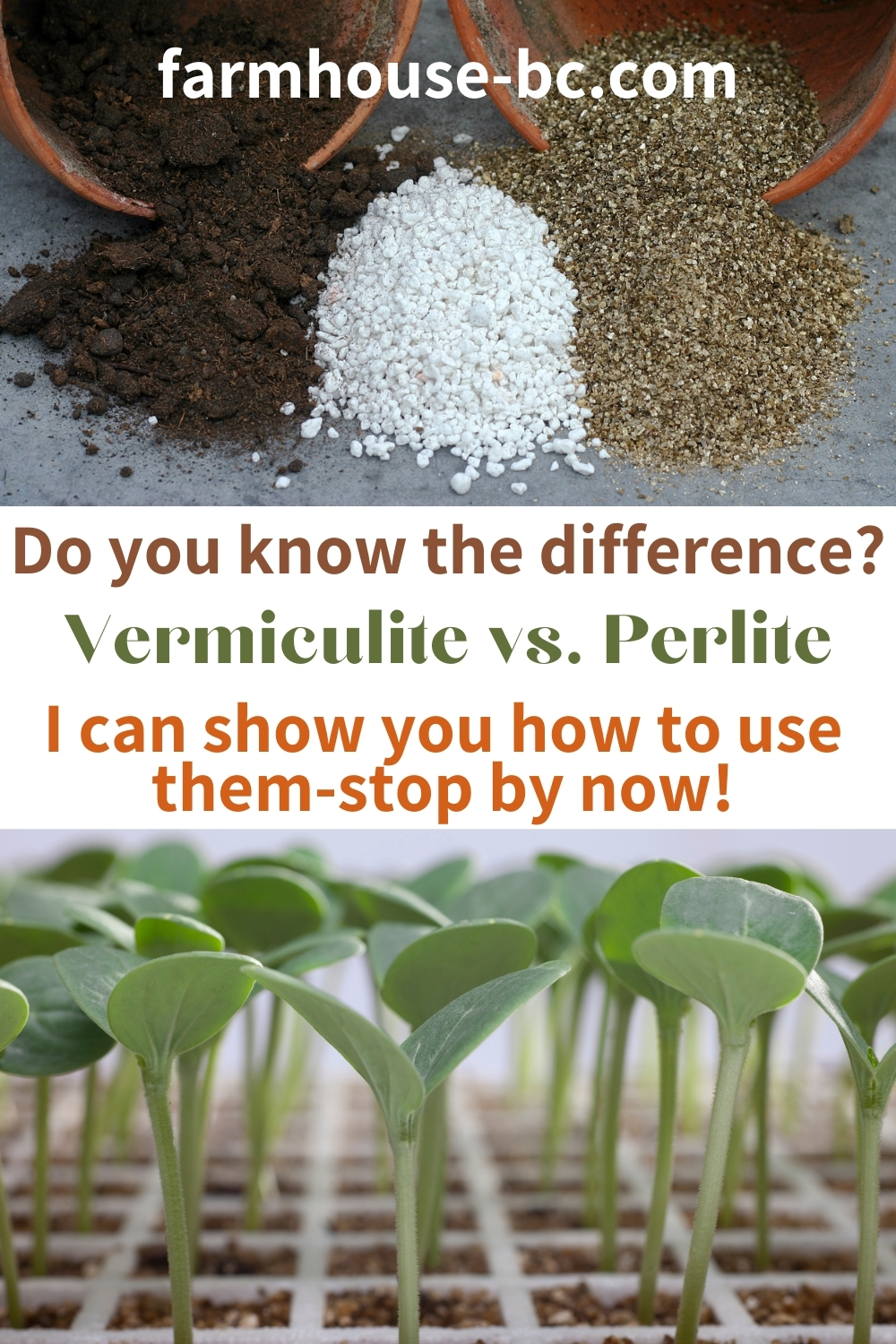
Pingback: Fish Emulsion Fertilizer, How To Make And Use! ⋆ Farmhouse-bc
Pingback: Attract More Butterflies In 10 Easy Tips! ⋆ Farmhouse-bc
Pingback: Elderberry Vs Pokeberry-the Shocking Difference Of The 2! ⋆ Farmhouse-bc
Pingback: 5 Shocking Reasons To Buy Dollar Tree Seeds ⋆ Farmhouse-bc
That is a great idea! Maybe I should? Thanks for reading and the suggestion.
Loved the guide, have you thought about starting a printed publication?
Pingback: Hanging flower basket from the Dollar Tree ⋆ Farmhouse-bc
Pingback: Growing lavender, health benefits and uses ⋆ Farmhouse-bc
Pingback: Gardening Tips for beginners ⋆ Farmhouse-bc
Thanks Liz 🙂
Thanks, Amy, we sure are and I appreciate what I learn from you and others 🙂
Any time 🙂 Thanks for stopping by Anja 🙂
You’re so welcome. I was confused for the longest time and wanted to know what was what 🙂
So much good info here! Thank you so much for sharing and gathering all of this research!
This is so interesting and informative! Thank you for a great post and explanation, Jersey!
Good info to know! Thanks for sharing, Jersey. Added to my gardening board to reference later. I’m always learning!
Great information here, thank you!
Pingback: The best 12 mosquito repellent plants - Farmhouse Basic Collection.
Pingback: Growing and Using Lemongrass - Farmhouse Basic Collection.
I think this is one of the most vital info for me. And i’m glad reading your article. But wanna remark on some general things, The web site style is ideal, the articles is really nice : D. Good job, cheers
I loved as much as you will receive carried out right here. The sketch is attractive, your authored subject matter stylish. nonetheless, you command get bought an impatience over that you wish be delivering the following. unwell unquestionably come more formerly again as exactly the same nearly very often inside case you shield this hike.
Pingback: Hügelkultur Raised Beds - Farmhouse Basic Collection.
Pingback: 11 Plants to Regrow From Cuttings - Farmhouse Basic Collection.
Pingback: Guide to container gardening - Farmhouse Basic Collection.